#amyotrophiclateralsclerosis
Text
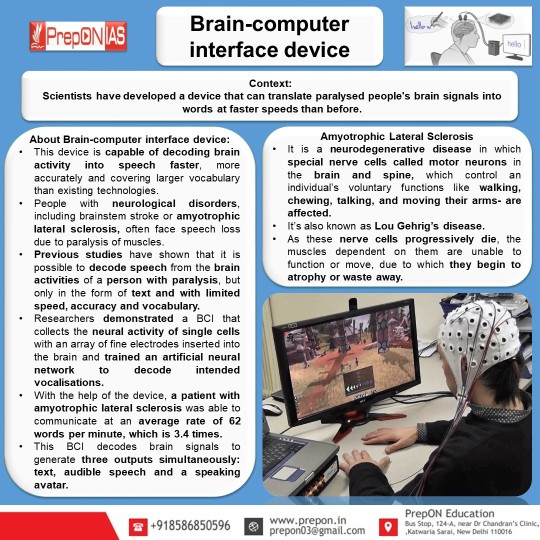
Brain-computer interface device
#braincomputerinterfacedevice#braincomputerinterfaces#braincomputerinterfaced#braincomputer#paralysedpeople#paralysis#brainsignals#amyotrophiclateralsclerosis#Neurologicaldisorder#dailycurrentaffairs#currentaffairs#GeneralKnowledge#upsc#upscprelims2024#upscprelims#upsc2023#infographic
2 notes
·
View notes
Photo

#Repost @medicalmarijuana411 ・・・ ALS, also known as "Lou Gehrig's Disease", is a neurodegenerative disease caused by destruction of motor neurons, which are cells of the nervous system which transmit signals to your muscles to control movement. This damage leads to muscle weakness and atrophy (i.e. wasting/shrinking). There is no known cure for ALS and most patients pass away within three to five years after receiving the diagnosis. There is increasing amounts of evidence that cannabis may be useful in alleviating the symptoms of patients with ALS. #als #medicalmarijuana #cannabis #research #amyotrophiclateralsclerosis #medicalmarijuana411 #marijuanaeducation #cannabiscertification #cannabiscommunity (at Bronx, NY) https://www.instagram.com/p/CoOIJvJuOH9/?igshid=NGJjMDIxMWI=
#repost#als#medicalmarijuana#cannabis#research#amyotrophiclateralsclerosis#medicalmarijuana411#marijuanaeducation#cannabiscertification#cannabiscommunity
0 notes
Photo

The 2023 season got off to a good start for me this year: Two third place finishes and one fourth place finish. What a great weekend competing against friends. New personal record of 1.23.2 and I know where that extra second is. Just need the practice. Continued thank you to ProAuto for thier work on the car and Racing for ALS and Altruistic Joe Coffee for their support. The newest contingency for Spec E30, The Gil Barakat Commemorative contingency of $100 and Altruistic Joe Coffee, was awarded to Andrew Agurkis for his sixth place finish during Saturdays race. #coffee #coffeetime #coffeelover #cafe #coffeeshop #coffeeaddict #coffeelovers #coffeegram #Altruisticjoe #als #alsawareness #lougehrigsdisease #amyotrophiclateralsclerosis #endals #racecar #racing #cars #motorsport #car #race #carsofinstagram #carporn #bmw #becauseracecar #m #racecars #speed #trackcar #proautosc https://www.instagram.com/p/Cnkol15Li68/?igshid=NGJjMDIxMWI=
#coffee#coffeetime#coffeelover#cafe#coffeeshop#coffeeaddict#coffeelovers#coffeegram#altruisticjoe#als#alsawareness#lougehrigsdisease#amyotrophiclateralsclerosis#endals#racecar#racing#cars#motorsport#car#race#carsofinstagram#carporn#bmw#becauseracecar#m#racecars#speed#trackcar#proautosc
0 notes
Text



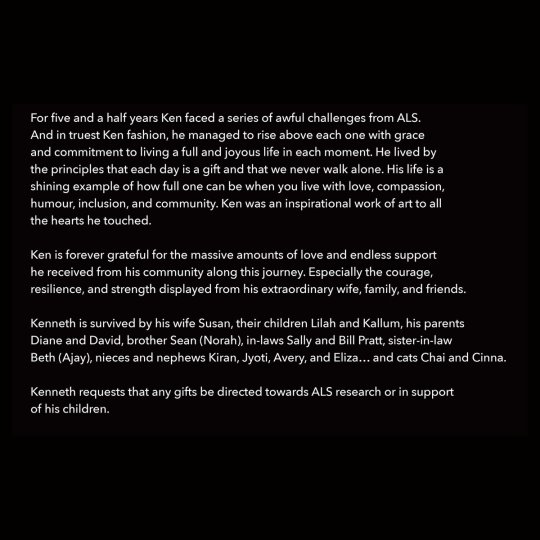
Rest in Peace 🕊️#KennethMitchell, #StarTrek: Discovery and #CaptainMarvel (2019) actor dies after 5 years battle with #ALS, or #AmyotrophicLateralSclerosis. He was 49.
What is Amyotrophic lateral sclerosis (ALS)?
-https://www.cdc.gov/als/WhatisAmyotrophiclateralsclerosis.html
-https://www.mayoclinic.org/diseases-conditions/amyotrophic-lateral-sclerosis/symptoms-causes/syc-20354022
0 notes
Photo

#ALSAwarenessMonth #ALS #AmyotrophicLateralSclerosis #LouGehrig’sDisease
0 notes
Photo

#amyotrophiclateralsclerosis can be debilitating condition with unsatisfactory recovery even with treatment! #stemcelltherapy is now at the forefront in treating such illnesses! Call us and schedule an appointment with our panel #stemcelltherapy
To know more about #ALS visit https://www.viezec.com
1 note
·
View note
Photo
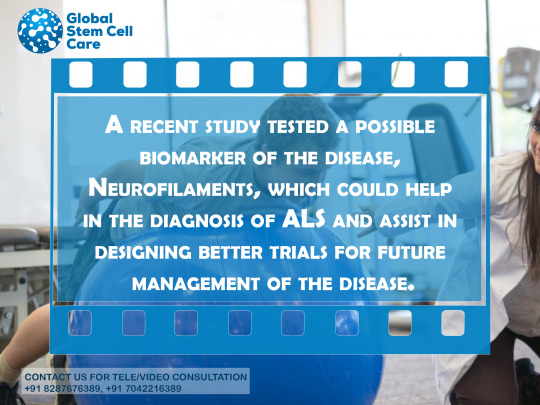
A recent study tested a possible biomaker of the disease, neurofilaments,which could help in the #diagnosis of als and assist in designing better trails for future management of the disease
To know more about #als visit, www.globalstemcellcare.com
1 note
·
View note
Photo
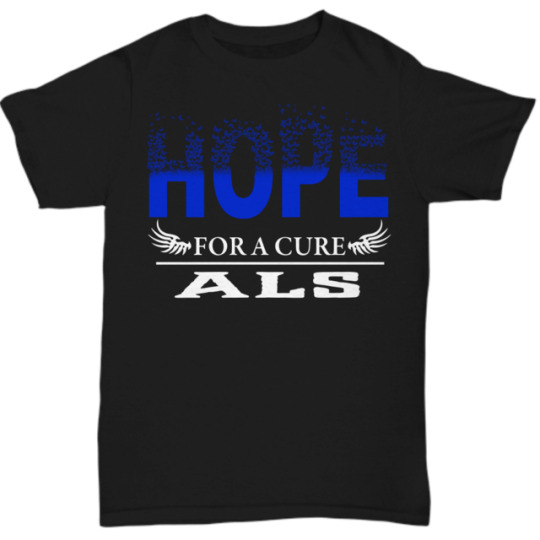
Hope for a cure ALS Lou Gehrig Disease Awareness T-shirt ---> http://bit.ly/2IqtnsN
Join us in wearing blue and help promote ALS Lou Gehrig Disease awareness in your community.
ALS Lou Gehrig Disease awareness support t-shirt. Purchase this t-shirts and we guarantee it will exceed your highest expectations!
#als#alsicebucketchallenge#StrikeoutALS#alsawareness#alssucks#endals#lougehrigsdisease#fuckals#WalkToDefeatALS#DefeatALS#cureals#fightals#alswalk#kissmyALS#alsassociation#beatALS#amyotrophiclateralsclerosis#alscanada#walkforals#alsawarenessmonth#lougehrigs#ProjectALS#findacureforals#kickALS
1 note
·
View note
Text
Investigations on ALS: to adjust "protangleins", could you put the right tool out of the "pocket"?

ALS, also known as Lou Gehrig's disease, affects over 100,000 people worldwide. Currently, there are no effective treatments, largely due to a poor understanding of how the disease begins and progresses at the molecular level, so it is invariably fatal. Among the pivotal cellular phenomena, the researchers noted that the motor neurons of ALS patients contain excessive aggregation of a protein called TDP-43. Because the TDP-43 proteins blocked in these aggregates cannot perform their normal function, scientists believe this accumulation contributes to motor neuron degeneration, the hallmark of ALS. A few years ago it was understood why these aggregates appear: it is cellular stress due to the formation of free radicals (ROS). Although the formation of these intermediates is a normal phenomenon in all cells, in the case of ALS, scientists suspect that there are environmental toxins that over time lengthen the production of ROS, eventually causing the aggregation of the mutated TDP-43 protein.
It is possible, according to experts, that there is a threshold for which small aggregates of TDP-43 are not relatively toxic to motor neurons; it is only the passage of time that enlarges the aggregates and makes them a problem for the nerve cells. Furthermore, even after stress has been relieved, the agglutination of TDP-43 persists in ALS motor neurons, but not in healthy neurons. The team then analyzed and identified chemical compounds that prevent this persistent accumulation of TDP-43 induced by cellular stress. These compounds also increased neuron survival with TDP-43 proteins containing an ALS-associated mutation. Normally, TDP-43 proteins help process cellular messenger RNAs, which serve as genetic blueprints for making proteins (protein synthesis). But when they aggregate outside the nucleus, TDP-43 proteins cannot perform their normal duties and this can have a profound effect on many cellular functions. The first effect is that the production of specific cellular proteins cannot occur, since the RNAs are not processed.
By generating motor neurons from induced pluripotent stem cells (iPSCs) that had been converted from human skin cells, a team from the University of San Diego, California, a few years ago, to mimic the cellular aspects of ALS exposed these laboratory motor neurons to toxins. which stressed the cells. After the exposure, the cellular entanglements of TDP-43 appeared. Among the toxins was the old antibiotic puromycin, which also inhibits protein synthesis and triggers the so-called unfolded protein response (UPR). Researchers have tested thousands of chemical compounds for their effects on protein aggregation with RNAs. They were surprised to find compounds that not only reduced the overall amount of aggregation by up to 75%, but also varied the size and number of aggregates per cell. Some of the compounds tested were molecules with extensive aromatic regions (arms that allow them to insert into nucleic acids). TDP-43, in fact, must bind RNA to join the protein tangles associated with ALS.
This too is previously unrecognized information: TDP-43 aggregates are not just proteins, but trap partner RNAs that must be translated into proteins. According to the scientists, these compounds expand information to unravel the relationship between RNA-protein aggregations and neurological diseases. Many proteins that bind RNAs, in fact, use hydrophobic portions (called RRM, with the amino acids phenylalanine, glycine, valine and tryptophan) to pair with the bases of their nucleic acid. Therefore, it makes sense that a compound that interacts with RNA prevents TDP-43 from aggregating: it would act as a competitive base for base pairing. And the same information could open the basis for the synthesis of aromatic-structured drugs that prevent TDP-43 from aggregating and sequestering cellular RNAs away from normal protein synthesis. But hydrophobicity is apparently a problem that also afflicts the main mutant protein of ALS: superoxide dismutase (SOD1).
Researchers at Sastra Deemed University in India have verified that the SOD aggregates that occur in the disease are due to the fact that the mutation causes the protein to change its solubility: from hydrophilic it becomes more hydrophobic, and it is precisely the hydrophobic regions of the protein a cause the appearance of aggregates similar to those of TDP-43. Incidentally, SOD1 is an enzyme responsible for the removal of certain cellular ROS, a function that appears to be lost following the mutation. The problem is that it's unclear whether it's the SOD1 mutation that triggers her aggregation or it's the normal cellular ROS that over time do this for her. Incidentally, this modification is associated with the formation of an internal molecular bridge to the protein that should not exist: a disulfide bridge (S-S) that simulates both the oxidation of the protein and reduces its solubility. To reverse the problem, there are research groups that are investigating chemical compounds that can act as selective antioxidants or change the "diseased" conformation of SOD1.
Particularly selective would be circular, enlarged-ring sulfur compounds, which seem to prefer to attach themselves to residue 111 of the protein. A prototype of these substances is called 1,2-dithian-1-oxide, which opens and forms a bridge between two mutant SOD1 monomers and prevents them from irreversibly aggregating. This compound was tested in 2018 by Dr. Donnelly's group at the University of A second compound that would do the same job is called ebselen: it is an antioxidant molecule with an enzymatic-like action because it contains a selenium atom. This also opens up like the previous compound and prevents the diseased protein from clumping together. Not only that, ebselen contains two aromatic groups, which would make it a potential drug to target TDP-43 aggregates as well. A stroke of luck, defined as "killing two birds with one stone". This possibility is being investigated by two separate research groups.
One of them, from the University of Arizona, led by Professor Khanna, has identified a partially aromatic compound (nTRD22) that prevents the TDP-43 protein from aggregating with a head-tail mechanism. This prevented the mutated protein from sequestering its partner RNA and improved motor coordination in an ALS model in Drosophila. A limitation that has delayed the engineering of molecules against ALS is the fact that, unfortunately, both SOD1 and TDP-43 do not have protein "pockets" in which to accommodate molecules of a certain diameter. Possibly this is also one of the factors for which the molecules tested to date are partially effective, but do not have a great selectivity. This is prompting experts to consider the underlying cellular processes of ALS as more worthy of targeting. The metabolic alterations, oxidative stress and inflammation that are known to intervene in the pathogenetic process seem to be more easily attacked.
Also because many proteins belonging to these processes have a structure in which there are molecular "pockets" and others have molecules or drugs already known and / or validated.
- edited by Dr. Gianfrancesco Cormaci, PhD, specialist in Clinical Biochemistry.
Scientific references
Francois ML et al. RSC Chem Biol 2021; 2(4):1158-1166.
Mollasalehi N et al. ACS Chem Biol 2020; 15(11):2854-59.
Yerbury J, Cashman NR. EBioMedicine 2020; 59:102997.
Anzai I et al. Free Radic Biol Med. 2020; 147:187-199.
Tompa DR et al. Int J Biol Macromol. 2020; 145:904-913.
Hedl TJ et al. Front Neurosci. 2019 Jun 11; 13:548-57.
Mandrioli J et al. BMJ Open. 2019 May 30; 9(5):028486.
Read the full article
#ALS#alternativesplicing#amyotrophiclateralsclerosis#cellularstress#drugdiscovery#genemutation#motoneurons#neurodegeneration#neuroinflammation#neuronaldamage#neuronaldeath#nucleicacids#oxidativestress#proteinmisfolding#reactiveoxygenspecies#RNA
0 notes
Text
Every year, a few thousand people worldwide get diagnosed with Amyotrophic Lateral Sclerosis — a rare neurological condition that causes the deterioration of the nerve cells. This ultimately leads to a loss of control over voluntary muscles.
The right treatment can slow the progression of the disease and help to manage the symptoms better. Read on to know more about what the condition looks like at different stages and its various warning signs.
Understanding ALS
Amyotrophic Lateral Sclerosis (ALS) belongs to a group of disorders known as Motor Neuron Disease, caused by the gradual degeneration of motor neurons. Motor neurons are nerve cells that extend from the brain to the spinal cord and muscles throughout the body. As motor neurons degenerate, they stop sending messages to the muscles, and the muscles gradually weaken, start to twitch, and waste away (atrophy). Eventually, the brain loses its ability to initiate and control voluntary movements.
While about 5-10% of ALS cases are hereditary, most have unknown causes, with genetic and environmental factors often playing a huge role in it.
Symptoms of ALS at different stages
Most people first see symptoms such as muscle stiffness or weakness in one arm or leg only and often mistake it for something other than ALS. However, the progression of the disease will likely differ from person to person, and at later stages, individuals may require assisted living and ventilators to help them breathe.
Early symptoms
The early symptoms of ALS are often extremely subtle and may often go overlooked. Some of its signs include:
Muscle cramps and twitching
Spasticity, or stiff muscles
Muscle weakness in one arm or leg
Trouble chewing, swallowing or speaking
Slurred speech
Awkwardness while walking or running
Difficulty with simple tasks like doing up a button
Some people may experience speech or swallowing difficulties first, which is known as ‘bulbar onset ALS. Others may first experience muscle weakness in the arms of legs, which is known as ‘limb onset ALS.
Middle-stage symptoms
Symptoms at this stage are pretty obvious among individuals with ALS, as muscle degeneration starts significantly affecting their daily lives. These include:
Significant problems with speaking and swallowing
Difficulty walking or performing daily activities
Frequent loss of balance
Rapid weight loss due to difficulty eating
Depression resulting out of awareness of their symptoms
Late-stage symptoms
This is when the patient’s muscle degeneration is near-complete, and they lose the ability to perform basic tasks like speak, chew or swallow. Some of the major symptoms at this stage can frequently lead to life-threatening complications and need careful monitoring, such as:
Difficulties with standing, walking, breathing, and even swallowing — leading to an increased risk of choking
Problems with speaking and communication, requiring the need of assistive devices
Troubles with decision-making and memory loss
Other symptoms may also include:
Rapid weight loss from malnutrition
Bedsores from being constantly supine
Significant depression and anxiety
Pain from severe nerve damage
Treatment for ALS
The right treatment can slow the progression of the disease and make it easier to manage the symptoms and stay comfortable. The best ALS treatment will consist of various therapies such as Stem Cell Therapy, Occupational Therapy, Physical Therapy, and Speech Therapy. Regular caregiving is also helpful, either from a family member or a professional caregiver. Nutritional support is another crucial component of a treatment plan as therapists work with patients to plan meals that are easy to swallow and digest while providing all the necessary nutrients.
Living with ALS can be challenging, but it is important to remember that the right treatment can increase your mobility and independence and help you enjoy life better. If you experience any of the early-onset symptoms of ALS, you must get a check-up right away. The sooner you get a proper diagnosis, the sooner you can benefit from the best ALS treatment, and the sooner you and your loved ones can start adjusting to and making the most of your new life.
0 notes
Photo
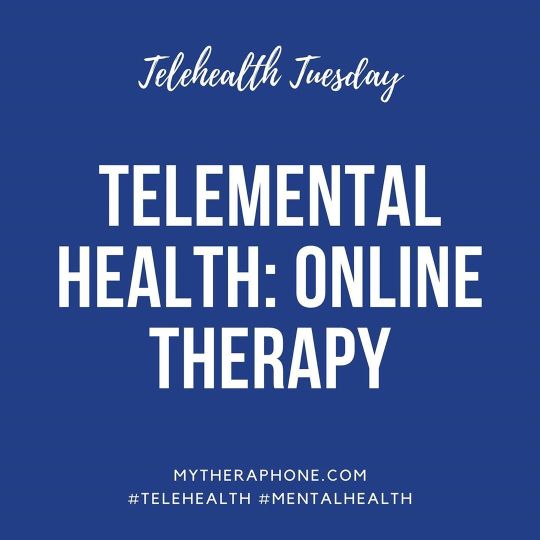
📱📲 Today in Telehealth Tuesday 📱📲 Telemental Health : Online Therapy 🌐 Telemental health may be useful to individuals who cannot leave their home, who work unconventional hours, as well as those overseas or who live in rural or remote areas. 🌐 Online therapy, also known as telemental health, is a growing field. A therapist or counselor provides psychological counseling and support over the internet through email, video conferencing, online chat, or a phone call. 🌐 Ask your mental health provider about their experiences or thoughts on telemental health. Medicare, Medicaid, and other third-party reimbursement may be available; also, check with your insurance provider. Read here for more mental health resources: https://adaa.org/finding-help/telemental-health How did telehealth impact your life? We would love to hear your thoughts! 💙 TheraPhone 💚 . .. ... #ChoosePT #MyTheraPhone #NeuroPhysioDaily #TherapyOnTheGo #TelehealthTuesday . .. ... >>—Stay Connected—> Visit our website: 🌐 mytheraphone.com Send us an email: 💌 [email protected] Follow us on social media: ⓕ facebook.com/theraphone . .. ... #amyotrophiclateralsclerosis #awareness #brain #brainhealth #gadgets #mentalhealth #technology #health #healthcare #healthy #neurology #neuroscience #neuro #neuropt #PT #physicaltherapy #recovery #rehab #rehabilitation #therapy #telehealth #telemental #telemedicine #telerehab #wellness https://www.instagram.com/p/CApuiFcHGoQ/?igshid=1wsieo0pdlug3
#choosept#mytheraphone#neurophysiodaily#therapyonthego#telehealthtuesday#amyotrophiclateralsclerosis#awareness#brain#brainhealth#gadgets#mentalhealth#technology#health#healthcare#healthy#neurology#neuroscience#neuro#neuropt#pt#physicaltherapy#recovery#rehab#rehabilitation#therapy#telehealth#telemental#telemedicine#telerehab#wellness
0 notes
Photo

This is what I made for Mrs S for dinner tonight. She had a rough day, so I made a nice salad. #caregiverlife #amyotrophiclateralsclerosis #alsicebucketchallengefail #mademywifedinner #easydinner #saladsofinstagram (at Wanitakashiro, Otsu-shi) https://www.instagram.com/p/B9rUbklpdjk/?igshid=1efa3e2t7zh5q
#caregiverlife#amyotrophiclateralsclerosis#alsicebucketchallengefail#mademywifedinner#easydinner#saladsofinstagram
0 notes
Photo
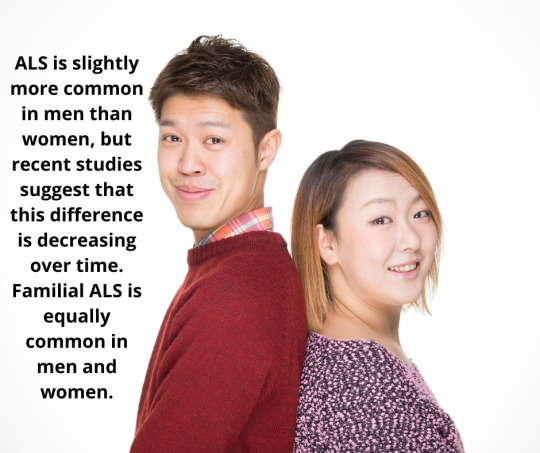
#ALSAwarenessMonth #ALS #AmyotrophicLateralSclerosis #LouGehrig’sDisease
0 notes